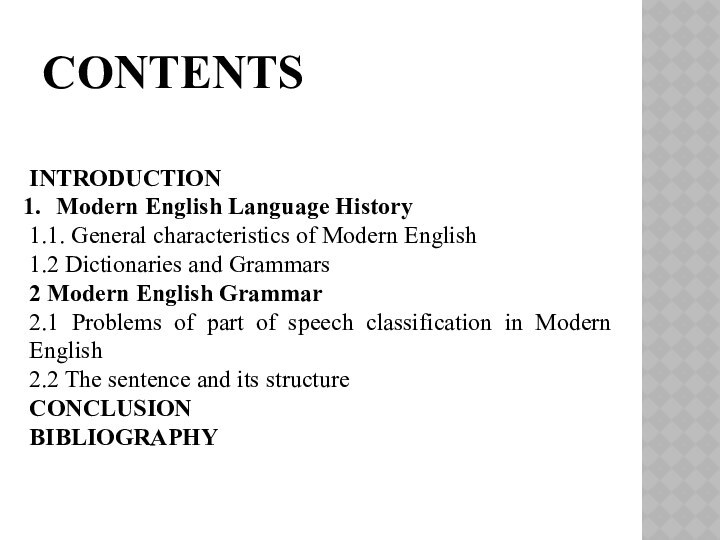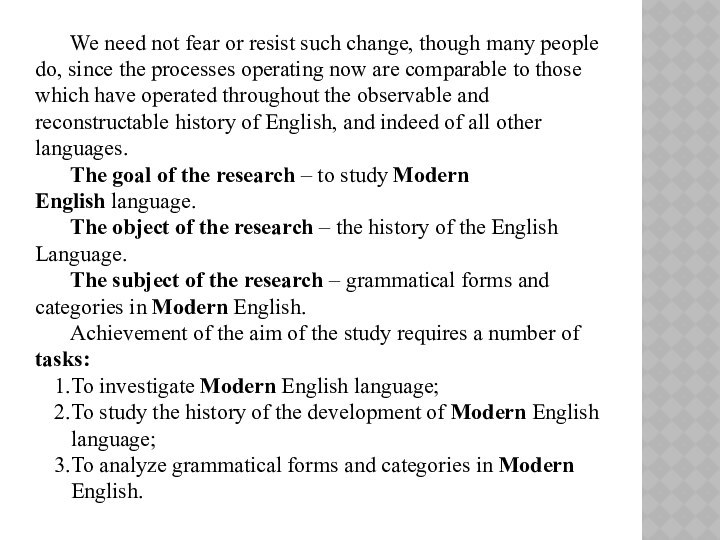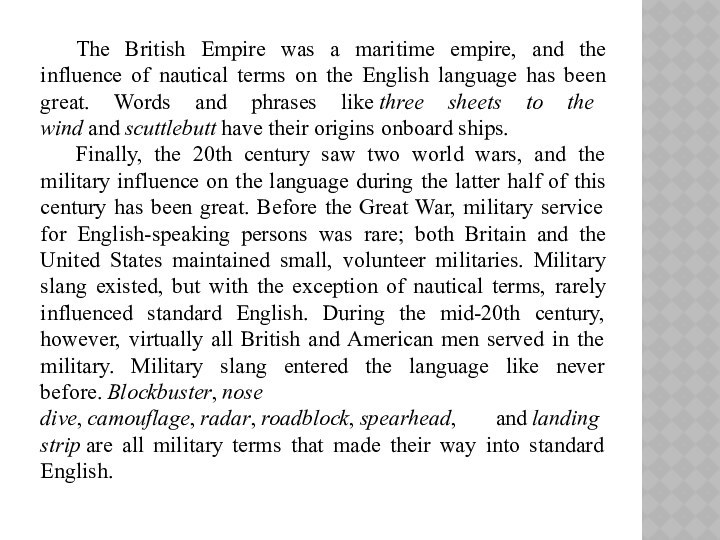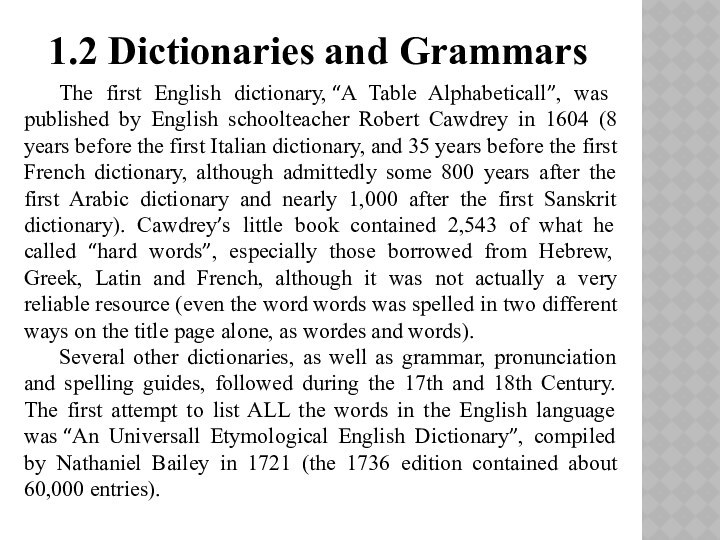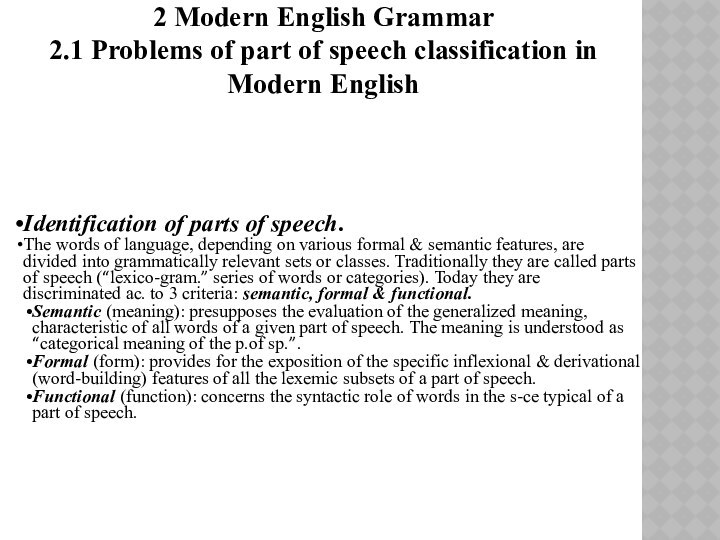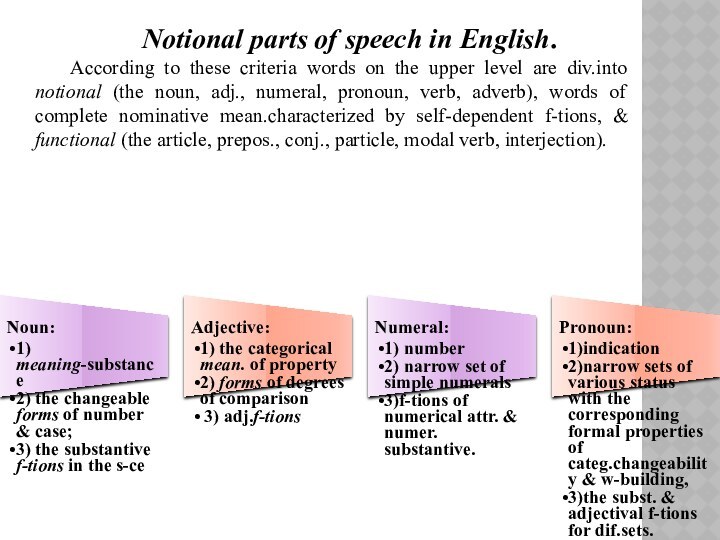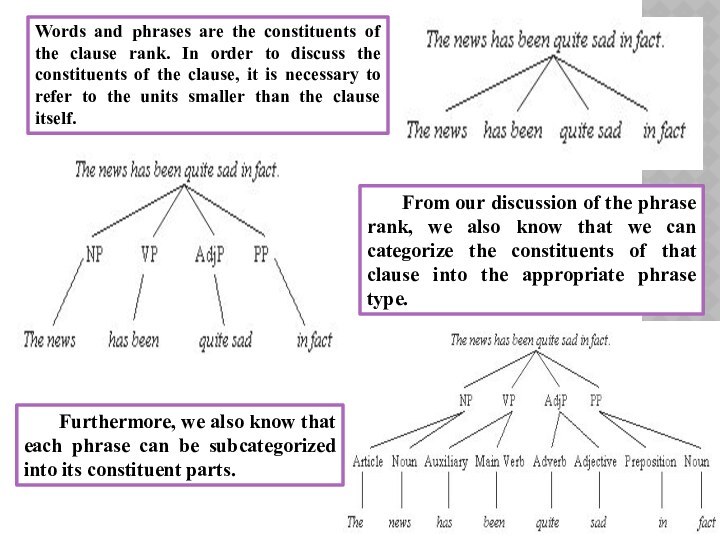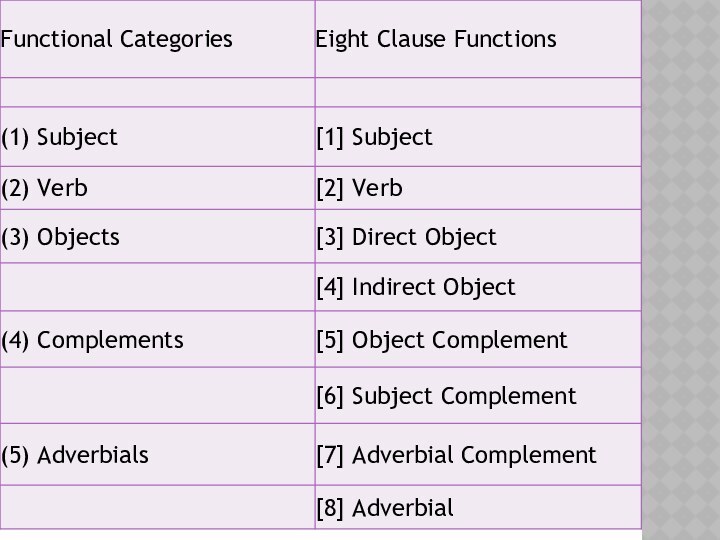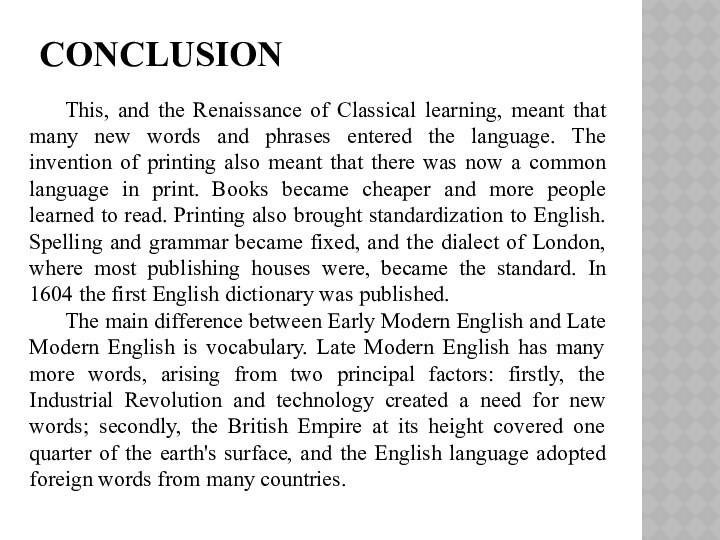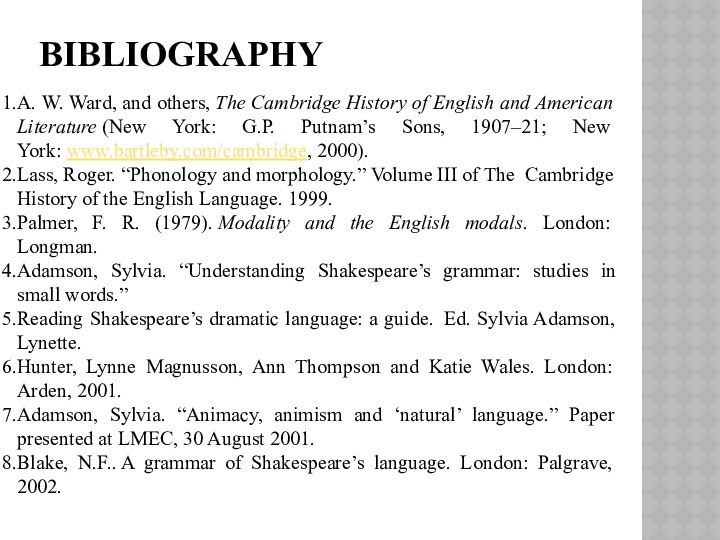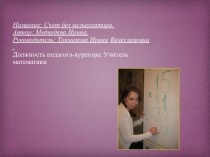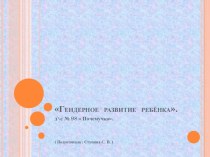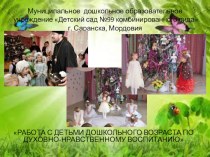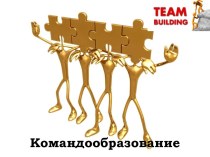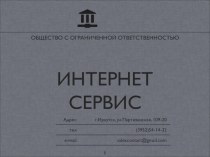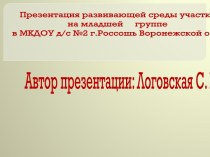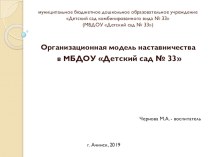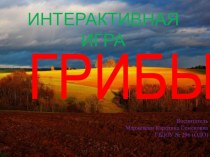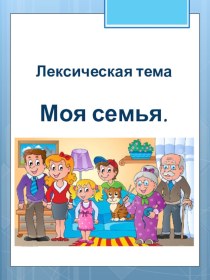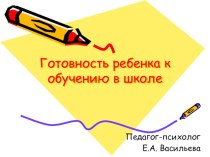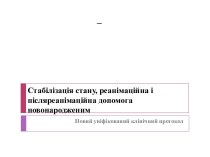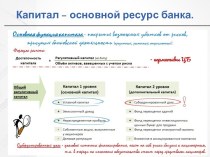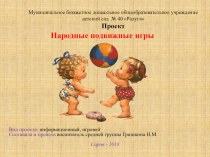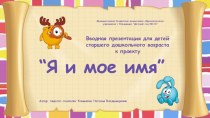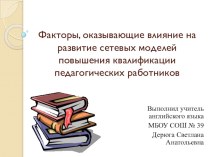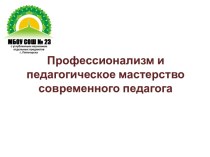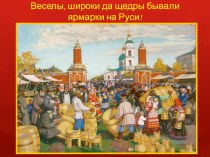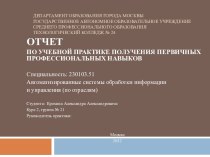Слайд 2
CONTENTS
INTRODUCTION
Modern English Language History
1.1. General characteristics of Modern
English
1.2 Dictionaries and Grammars
2 Modern English Grammar
2.1 Problems of
part of speech classification in Modern English
2.2 The sentence and its structure
CONCLUSION
BIBLIOGRAPHY
Слайд 3
INTRODUCTION
The history of the English language has traditionally
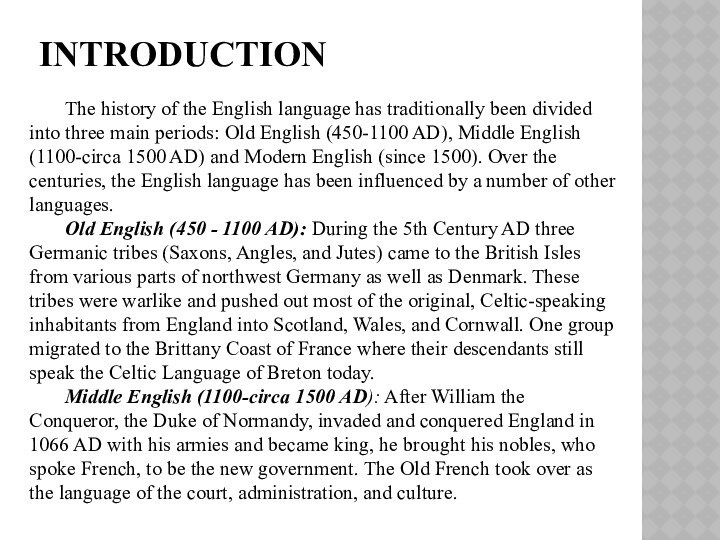
been divided into three main periods: Old English (450-1100
AD), Middle English (1100-circa 1500 AD) and Modern English (since 1500). Over the centuries, the English language has been influenced by a number of other languages.
Old English (450 - 1100 AD): During the 5th Century AD three Germanic tribes (Saxons, Angles, and Jutes) came to the British Isles from various parts of northwest Germany as well as Denmark. These tribes were warlike and pushed out most of the original, Celtic-speaking inhabitants from England into Scotland, Wales, and Cornwall. One group migrated to the Brittany Coast of France where their descendants still speak the Celtic Language of Breton today.
Middle English (1100-circa 1500 AD): After William the Conqueror, the Duke of Normandy, invaded and conquered England in 1066 AD with his armies and became king, he brought his nobles, who spoke French, to be the new government. The Old French took over as the language of the court, administration, and culture.
Слайд 4
We need not fear or resist such change,
though many people do, since the processes operating now
are comparable to those which have operated throughout the observable and reconstructable history of English, and indeed of all other languages.
The goal of the research – to study Modern English language.
The object of the research – the history of the English Language.
The subject of the research – grammatical forms and categories in Modern English.
Achievement of the aim of the study requires a number of tasks:
To investigate Modern English language;
To study the history of the development of Modern English language;
To analyze grammatical forms and categories in Modern English.
Слайд 5
1. Modern English Language History
1.1. General characteristics of
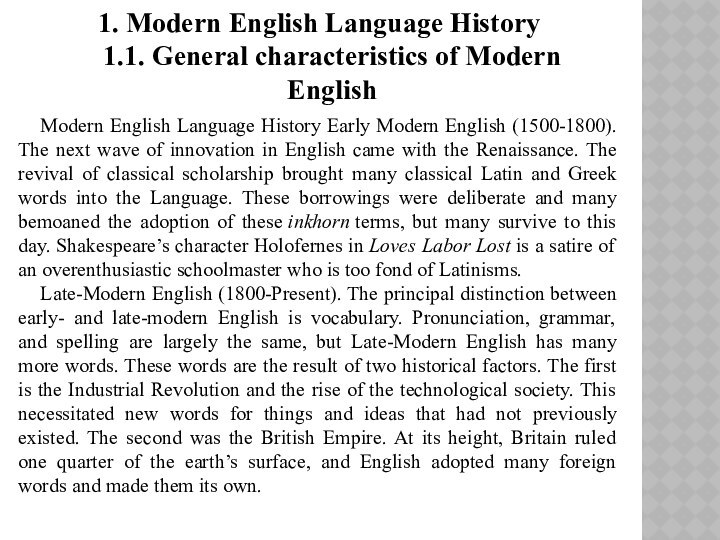
Modern English
Modern English Language History Early Modern English (1500-1800).
The next wave of innovation in English came with the Renaissance. The revival of classical scholarship brought many classical Latin and Greek words into the Language. These borrowings were deliberate and many bemoaned the adoption of these inkhorn terms, but many survive to this day. Shakespeare’s character Holofernes in Loves Labor Lost is a satire of an overenthusiastic schoolmaster who is too fond of Latinisms.
Late-Modern English (1800-Present). The principal distinction between early- and late-modern English is vocabulary. Pronunciation, grammar, and spelling are largely the same, but Late-Modern English has many more words. These words are the result of two historical factors. The first is the Industrial Revolution and the rise of the technological society. This necessitated new words for things and ideas that had not previously existed. The second was the British Empire. At its height, Britain ruled one quarter of the earth’s surface, and English adopted many foreign words and made them its own.
Слайд 6
The British Empire was a maritime empire, and
the influence of nautical terms on the English language
has been great. Words and phrases like three sheets to the wind and scuttlebutt have their origins onboard ships.
Finally, the 20th century saw two world wars, and the military influence on the language during the latter half of this century has been great. Before the Great War, military service for English-speaking persons was rare; both Britain and the United States maintained small, volunteer militaries. Military slang existed, but with the exception of nautical terms, rarely influenced standard English. During the mid-20th century, however, virtually all British and American men served in the military. Military slang entered the language like never before. Blockbuster, nose dive, camouflage, radar, roadblock, spearhead, and landing strip are all military terms that made their way into standard English.
Слайд 7
1.2 Dictionaries and Grammars
The first English dictionary, “A Table
Alphabeticall”, was published by English schoolteacher Robert Cawdrey in
1604 (8 years before the first Italian dictionary, and 35 years before the first French dictionary, although admittedly some 800 years after the first Arabic dictionary and nearly 1,000 after the first Sanskrit dictionary). Cawdrey’s little book contained 2,543 of what he called “hard words”, especially those borrowed from Hebrew, Greek, Latin and French, although it was not actually a very reliable resource (even the word words was spelled in two different ways on the title page alone, as wordes and words).
Several other dictionaries, as well as grammar, pronunciation and spelling guides, followed during the 17th and 18th Century. The first attempt to list ALL the words in the English language was “An Universall Etymological English Dictionary”, compiled by Nathaniel Bailey in 1721 (the 1736 edition contained about 60,000 entries).
Слайд 8
2 Modern English Grammar
2.1 Problems of part of
speech classification in Modern English
Слайд 9
Notional parts of speech in English.
According to
these criteria words on the upper level are div.into
notional (the noun, adj., numeral, pronoun, verb, adverb), words of complete nominative mean.characterized by self-dependent f-tions, & functional (the article, prepos., conj., particle, modal verb, interjection).
Слайд 10
2.2 The sentence and its structure
Inversion of verb
and subject. After an adverbial element, a conjunction, or
an object, this was frequent in the sixteenth century (perhaps in as many as one-third of sentences), but dropped sharply after 1600.
Examples include:
‘And hereof commeth the destruction of the reprobates’ (James Bell, 1581)
‘My case is hard, but yet am I not so desperat as to reuenge it vpon my selfe’ (Holinshed’s Chronicle, 1587)
The multiple negative
In Old and Middle English it was unexceptional to negate more than one element of a sentence, and this remained down to the early seventeenth century, subsequently becoming rare or nonstandard.
Examples include:
‘I wyll not medle with no duplycyte’ (Stephen Hawes, 1503)
‘Hee absented not himselfe in no place’ (Philemon Holland, 1606).
Слайд 11
Furthermore, we also know that each phrase can
be subcategorized into its constituent parts.
From our discussion of
the phrase rank, we also know that we can categorize the constituents of that clause into the appropriate phrase type.
Words and phrases are the constituents of the clause rank. In order to discuss the constituents of the clause, it is necessary to refer to the units smaller than the clause itself.
Слайд 13
CONCLUSION
This, and the Renaissance of Classical learning, meant
that many new words and phrases entered the language.
The invention of printing also meant that there was now a common language in print. Books became cheaper and more people learned to read. Printing also brought standardization to English. Spelling and grammar became fixed, and the dialect of London, where most publishing houses were, became the standard. In 1604 the first English dictionary was published.
The main difference between Early Modern English and Late Modern English is vocabulary. Late Modern English has many more words, arising from two principal factors: firstly, the Industrial Revolution and technology created a need for new words; secondly, the British Empire at its height covered one quarter of the earth's surface, and the English language adopted foreign words from many countries.

